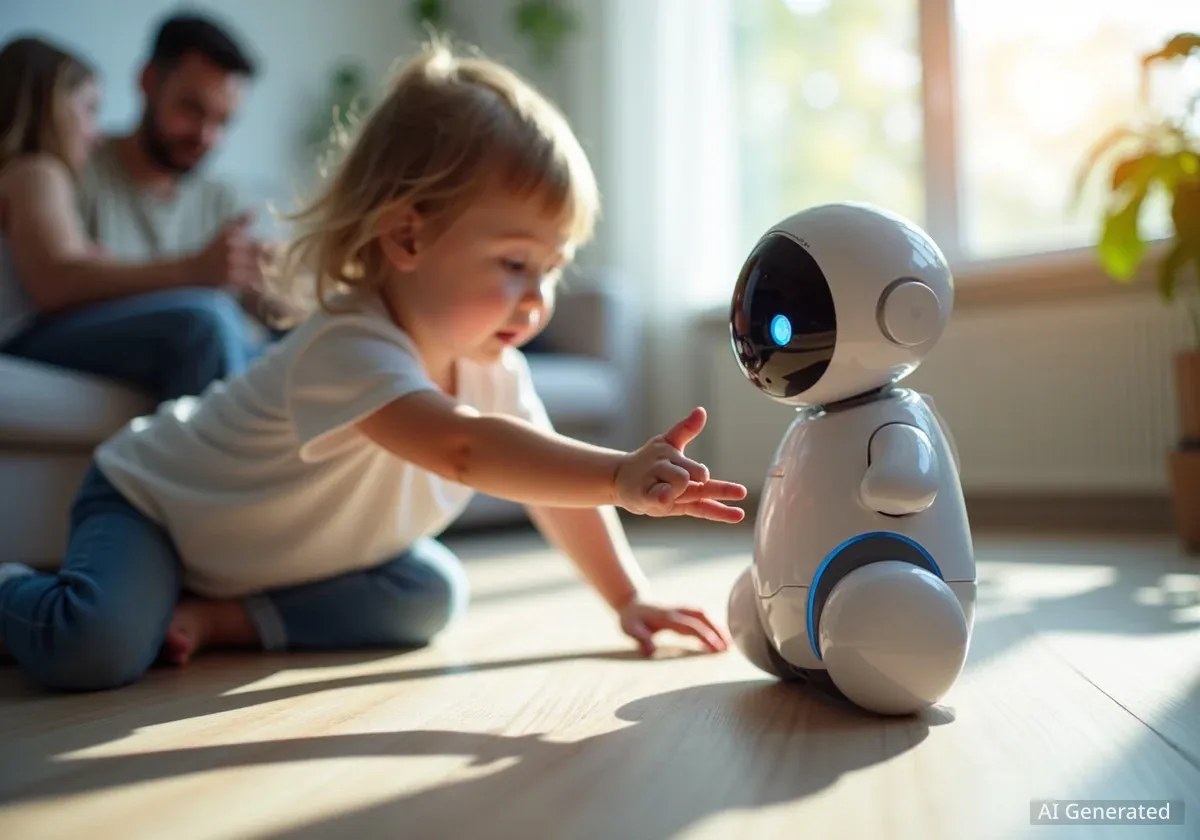The market for children's toys equipped with artificial intelligence is expanding rapidly, particularly in China, where the sector is projected to exceed $14 billion by 2030. Companies are now introducing these conversational toys to international markets, including the United States, Canada, and the United Kingdom, but are facing mixed feedback from parents regarding their functionality and long-term engagement.
Key Takeaways
- China's AI toy market is forecast to surpass ¥100 billion ($14 billion) by 2030, with over 1,500 companies in operation.
- Chinese companies like Haivivi (BubblePal) and FoloToy are expanding sales into North America, Europe, and other global regions.
- Major US companies, including Mattel in partnership with OpenAI, are developing their own AI-powered toys, with new products expected this year.
- Parents offer mixed reviews, praising the screen-free nature of the toys but criticizing technical issues like poor voice recognition and overly complex responses.
A Rapidly Growing Market in China
The integration of chatbot technology into children's playthings is fueling a significant economic boom. A recent report from the Shenzhen Toy Industry Association and JD.com projects that China's AI toy sector will grow to over ¥100 billion, which is approximately $14 billion, by the year 2030. This growth rate is reportedly faster than nearly any other segment of consumer artificial intelligence.
The industry's expansion is supported by a large number of companies entering the space. According to data from the Chinese corporate database Qichamao, there were more than 1,500 companies operating in the AI toy sector in China as of October 2025.
Historical Context for Educational Toys
According to Rui Ma, a tech analyst at AlphaWatch.AI, the AI toy trend is a natural evolution in China. The country has a long-established market for educational electronics for children, dating back to the 1990s with products like electronic dictionaries and "study machines" from companies such as BBK. These devices were marketed to parents as educational tools that could read stories and act as interactive playmates.
Chinese Startups Enter Global Markets
Several Chinese companies are leading the charge and are now looking beyond domestic borders. Haivivi, the company behind a product called BubblePal, is one such example. BubblePal is a small, Ping-Pong ball-sized device that attaches to a child's existing stuffed animal, enabling it to "talk" using large language models from DeepSeek.
The device, which costs $149, allows parents to select from 39 different character voices through a smartphone app, including popular figures like Disney's Elsa. Haivivi reports having sold 200,000 units since its launch last summer. The company began selling BubblePal in the United States in December 2024 and has since expanded to Canada and the UK.
FoloToy's Sales Growth
Another Chinese startup, FoloToy, has seen impressive sales figures. The company sold more than 20,000 of its AI-equipped plush toys in the first quarter of 2025 alone. This figure nearly matched its total sales for the entire year of 2024. FoloToy projects it will sell 300,000 units by the end of this year and now distributes its products in over 10 countries.
FoloToy offers a different approach, allowing parents to train a toy bear, bunny, or cactus to speak using their own voice and speech patterns. Despite this international expansion, FoloToy's CEO, Kong Miaomiao, stated that outside of China, the company is still primarily “reaching early adopters who are curious about AI.”
US Companies Join the Competition
The market is not limited to Chinese startups. Major American companies are also investing in conversational AI for children. Toy giant Mattel has announced a partnership with OpenAI to integrate AI into its iconic brands, which include Barbie and Hot Wheels. The first products from this collaboration are expected to be revealed later this year.
Another notable entry is Grok, a plush toy developed with help from the musician Grimes. This toy is designed to chat with children and adapt its personality based on their interactions, indicating a growing trend of personalized AI companions.
Mixed Feedback from Parents
Despite the market's rapid growth and technological promise, the real-world experience for families has been inconsistent. Many parents appreciate that the toys are screen-free and often come with robust parental controls, offering an alternative to smartphones and tablets.
However, significant technical challenges remain. Some parents report that the AI capabilities can be unreliable or "glitchy." This leads to children losing interest in the toys relatively quickly, undermining their purpose as long-term companions.
Challenges with Engagement and Functionality
Penny Huang, a parent in Beijing, purchased a BubblePal for her five-year-old daughter. She hoped the toy would help her daughter feel less lonely and reduce her screen time. However, the initial excitement did not last.
“The responses are too long and wordy. My daughter quickly loses patience,” Huang said. “It doesn’t feel immersive—just a voice that sometimes sounds out of place.”
Huang eventually listed the BubblePal for sale on a secondhand marketplace, noting, “This is just like one of the many toys that my daughter plays for five minutes then gets tired of. She wants to play with my phone more than anything else.”
Voice Recognition and Usability Issues
Other parents have pointed to specific functional problems. Hongyi Li, another BubblePal user, found the voice recognition to be a primary issue. “Children’s speech is fragmented and unclear. The toy frequently interrupts my kid or misunderstands what she says,” Li explained.
Li also mentioned a usability challenge for younger children. The device still requires a button to be pressed for interaction, which can be difficult for toddlers to manage consistently. These technical shortcomings highlight the gap between the concept of an AI companion and the current reality of its implementation for young users.





